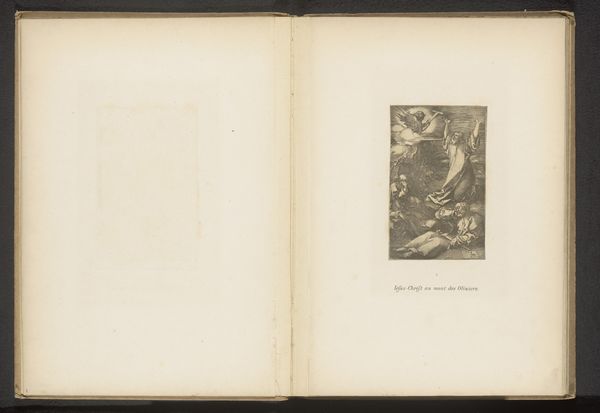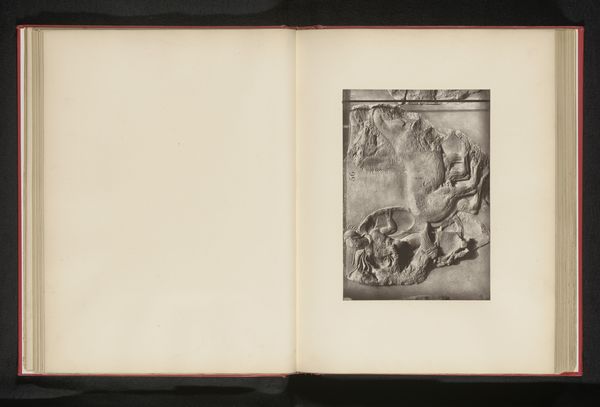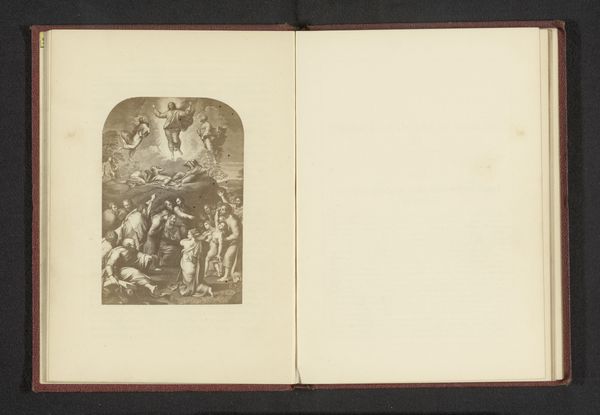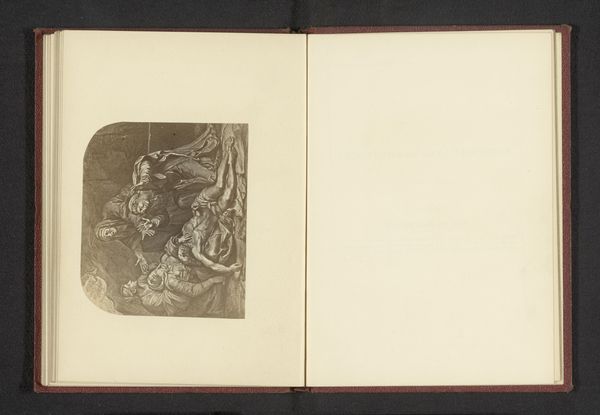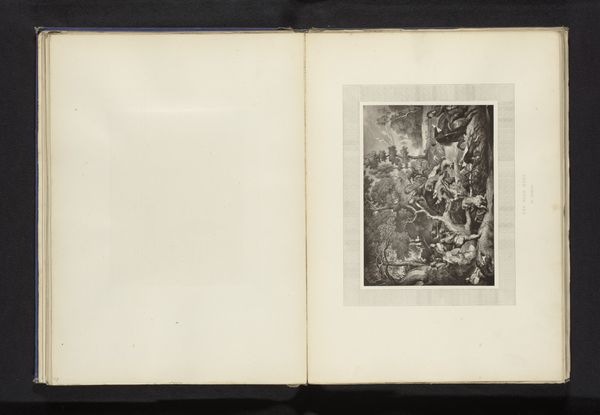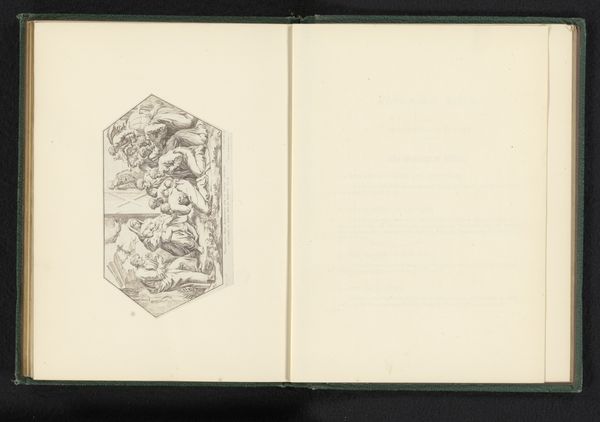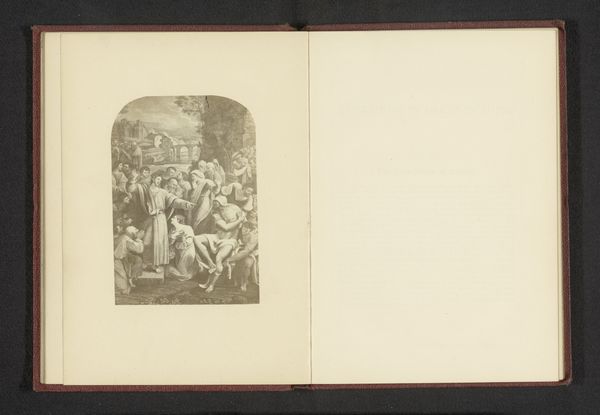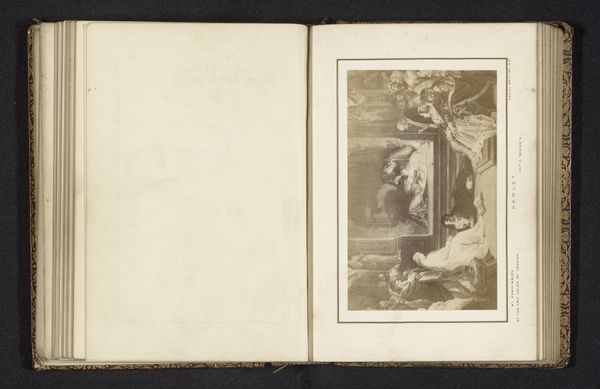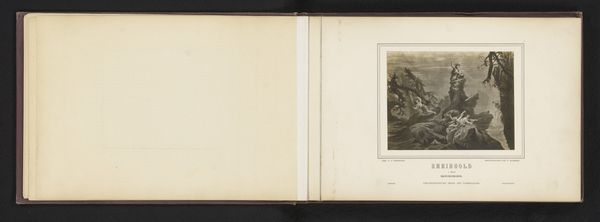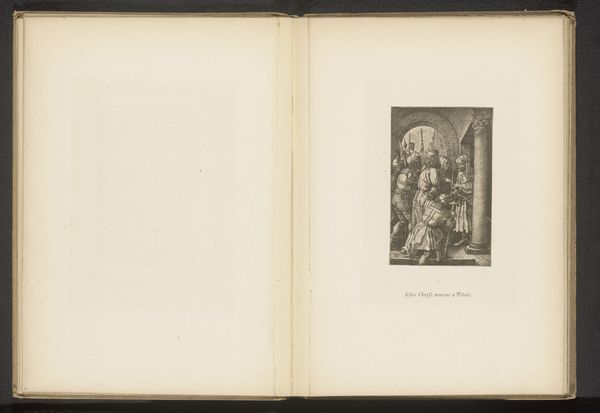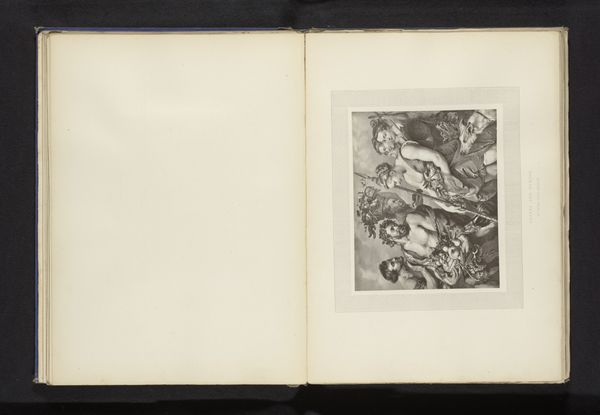
Fotoreproductie van een prent naar een schilderij, voorstellende de Kruisafname before 1863
0:00
0:00
Dimensions: height 122 mm, width 82 mm
Copyright: Rijks Museum: Open Domain
Editor: This intriguing engraving from before 1863, titled "Fotoreproductie van een prent naar een schilderij, voorstellende de Kruisafname," presents a scene of Christ's descent from the cross. The composition, while detailed, feels quite heavy and somber to me. How would you interpret its historical context? Curator: The artwork's photographic reproduction suggests its purpose likely went beyond mere aesthetics, placing it in a sphere of disseminating art to a wider audience. Given the subject matter, it also raises interesting questions about the role of religious imagery in shaping public consciousness. Was this image meant to inspire devotion, reinforce institutional authority, or something else entirely? Editor: That's interesting. I hadn't thought about its distribution as a social factor. The style is identified as baroque; were such prints widely circulated for religious education? Curator: Baroque imagery was certainly employed by the Catholic Church for didactic purposes, influencing emotion and conveying complex theological ideas to a largely illiterate populace. The choice of depicting the Deposition—the taking down of Christ's body—would certainly resonate within a context emphasizing piety, sacrifice, and the emotional drama of faith. Note, also, the use of chiaroscuro to dramatize the scene; the composition focuses on the spectacle of suffering. Editor: The light and dark is quite pronounced here! I'm wondering if its re-creation through engraving influenced that contrast. Considering that these types of engravings allowed a greater access to certain art, did this open up art to different class systems than previously thought? Curator: Certainly, these types of reproductions democratized access to art to an extent, circumventing the elite circles traditionally able to view such works in churches or private collections. However, the interpretation and consumption of the image would still be heavily shaped by pre-existing social structures and access to education. Editor: That makes perfect sense. I now see it as less about individual artistic expression and more about the institutional and cultural power dynamics at play. Thank you! Curator: Precisely! This shows us that an image always operates within a web of social, political, and cultural meanings beyond its aesthetic qualities.
Comments
No comments
Be the first to comment and join the conversation on the ultimate creative platform.
